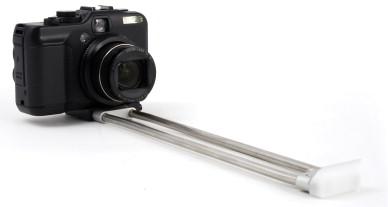Physical Address
304 North Cardinal St.
Dorchester Center, MA 02124
Photographic documentation is an important adjunct to the care of patients at risk for melanoma.
The evolution of pigmented lesions can be monitored using standardized procedures of whole body integumentary imaging.
Individual lesions can be documented using macro-photographic and dermoscopic techniques.
Photo documentation services can be provided within the practice or through the use of outside services.
As with most dermatological conditions, visual presentation plays an important role in the diagnosis and treatment of skin cancers. Because of this, clinical photography is a particularly important and powerful adjunct to the care of affected and at-risk patients, and has become a de facto standard of clinical care. The photographic techniques used fall into two categories, depending on whether documentation is being obtained for new occurrences or existing lesions. This chapter will discuss techniques for both, as well as the means for integrating and cross-referencing the results.
Regardless of the intended purpose, there are several standards of clinical photography that are constant. Key among these are posing, lighting and repeatability. In serial photography (i.e. documenting changes over time), repeatability is clearly the most critical factor. Without a standardized method of image capture, the clinical value of a photographic series will be seriously compromised.
If one's experience with photography has been limited to everyday ‘picture taking’, it is possible that the understanding of image capture is to point the camera at the subject and click the shutter. This in essence is the process enabled by today's popular ‘point-and-shoot’ (PAS) cameras. But while this technique would work well enough in ‘vacation’ photos, a somewhat higher degree of control is required for meaningful medical documentation.
There are two distinct types of photography typically employed as adjuncts to the treatment of skin cancers. Total body photography (TBP), also referred to as whole body integumentary photography, is a procedure in which the skin covering most of the body is documented in a series of sectional photos. The second type, close-up or macro photography, creates a detailed photograph of a small area of the skin.
Image capture begins, not with the camera, but with the subject. Patient preparation is a simple but important step in the process as it is the first line of defense against the nemesis of good clinical imaging; variability. Simply put, patient preparation means getting rid of anything in the area of interest that is not part of the anatomy. Clothing, jewelry makeup and moisturizers that produce a reflective surface or mask the true appearance, are not only distracting, but can detract from the clinical value of the photographic result. In addition, attention to the background behind the subject is needed. The subject should be posed against a neutral solid color background, preferably blue. A drape sheet may be placed behind the area to obscure the floor, walls and wires commonly in the background of the clinical examination room.
Equally important as preparation is positioning. Maintaining control over both the camera-to-subject distance and the patient pose will assure consistent results, and enable meaningful comparison of photographs taken at different time points. In TBP, the photographer always works at a fixed distance from the subject. The use of a calibrated distance mat, or simply tape marks on the floor, provides a reliable means to assure this consistency. For macro photography, a simple fixture that attaches directly to the camera can greatly simplify the process ( Fig. 61.1 ).

Finally, the importance of correct lighting cannot be overstressed. Lighting can make the difference between an excellent clinical photograph, and one that is worthless. And while it might seem convenient, the camera's built-in flash is seldom the best choice.
Regardless of the type of photography undertaken, there are key issues regarding image storage and retrieval. In the most basic scenario, an image file is captured to a removable memory card inside the camera, where the camera's software assigns a sequential alphanumeric filename to the image. The image file must then be exported to a computer's hard drive, or server, where it can be accessed by a suitable software application. While this process is simple on the front end, it becomes more complex, labor-intensive and error-prone in subsequent stages.
For medical practice, it is far better to implement a system where the images are captured directly into a patient database. In this type of system, the camera is connected to a computer by a cable during the capture sequence, and the image files are automatically stored by image management software.
Using a suitable camera and software, ‘tethered capture’ with live image overlay offers a number of attractive benefits to the user and is an excellent method of assuring precise, repeatable subject positioning. In this method, a live video image from the camera is superimposed, or ‘ghosted’, over a previously captured image of the patient. Camera and subject positioning are then adjusted so that the two images exactly coincide when the shutter is actuated. For serial photography comparing different time points, this technique is indispensable.
Become a Clinical Tree membership for Full access and enjoy Unlimited articles
If you are a member. Log in here